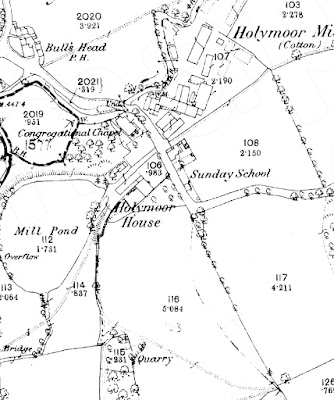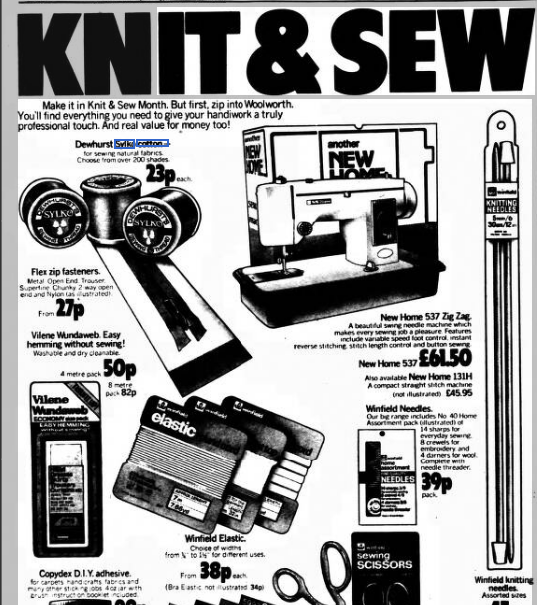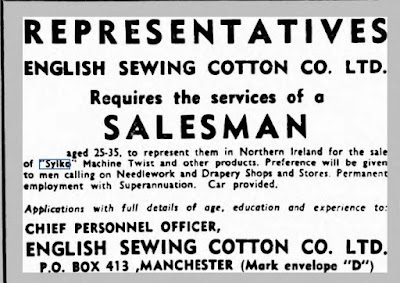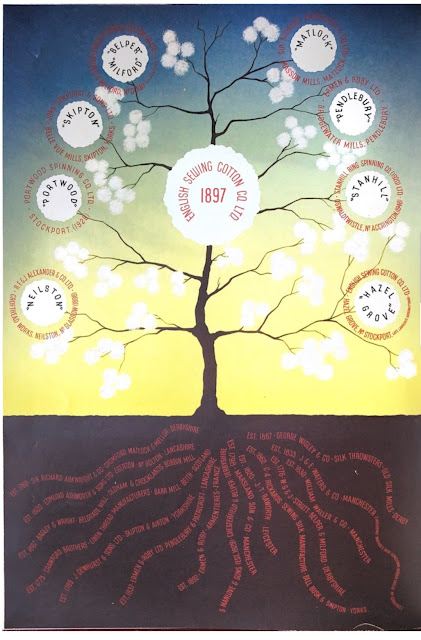Manlove of Chesterfield

One of the original members of the English Sewing Cotton company was Manlove of Chesterfield. The mill was at Holymoorside, now a salubrious suburb of the town. The location is skirted by the road to Baslow and the Peak District, making it a desirable spot. Among the green hills and trees, the River Hipper rushes its way through the village. This once fed a busy cotton mill, as the extract from an 1870s map below shows: Living not too far away, I was able to visit the site - of which very little remains. I approached from the Walton end, along a road called Cotton Mill Hill (the doglegged road on the map). Here is a view taken of the lane from by the chapel which is marked on the map: And the site of the mill and the river that powered it: The mill seems to have closed not that long after the ESCC was formed, and it has now been gone for more than a century. There is little information in the ESCC anniversary book that I have, except that the company had been established in 1829 and sp...




